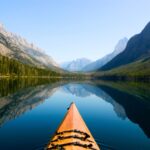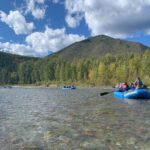One of the great things about exploring Alaska on your own is the freedom to plan lots of adventures, and kayaking in Alaska is awesome! Between Anchorage and Fairbanks there are lots of lakes and rivers to paddle on, so when you’re planning your Alaska road trip, be sure to carve out some time on the water.
The drive from Fairbanks to Anchorage is a fantastic journey through some of the most beautiful scenery in the world. The route takes you past glaciers, rugged mountains, and pristine lakes, making for a stunning view no matter which way you look. The drive can be a bit challenging, with narrow or dirt roads (if you choose to do the Richardson or Denali Highway), but it’s well worth the effort for the experience. And, of course, there’s always the possibility of seeing wildlife along the way, making the journey even more exciting. We know you’re looking for different opportunities to paddle but combining paddling with a drive from Fairbanks to Anchorage is definitely worth the effort.
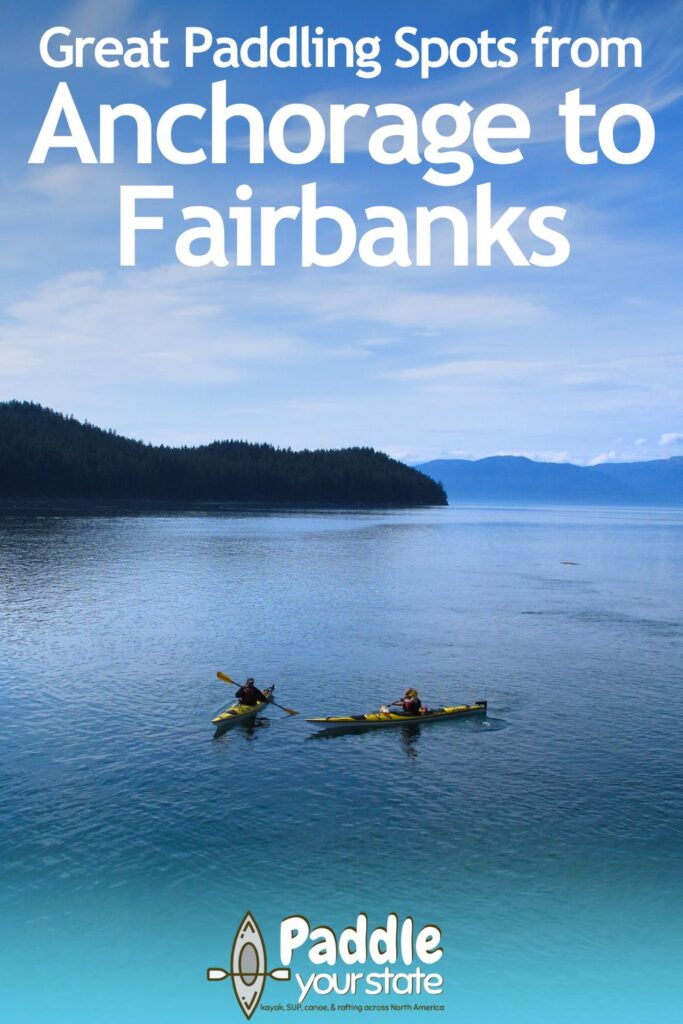
Lake Kayaking between Anchorage and Fairbanks
Alaska has many calm waters, mostly in smaller lakes. The state park system has provided tons of beginner paddlers access to its lakes and rivers. We’ve listed a few for you to tackle! Keep in mind that a lot of the rivers you’ll come across between Anchorage and Fairbanks are braider and can be pretty wild due to increased snow melt or rain up in the mountains. Safety first in all things!
Eklutna Lake – Anchorage
Eklutna Lake is a large, scenic lake located about 40 miles north of Anchorage. The lake is popular with residents and tourists as it offers great kayaking opportunities and beautiful views. The lake is calm with turquoise waters, making it an excellent place for beginners. There are several easy-to-access put-ins.
Where to launch:
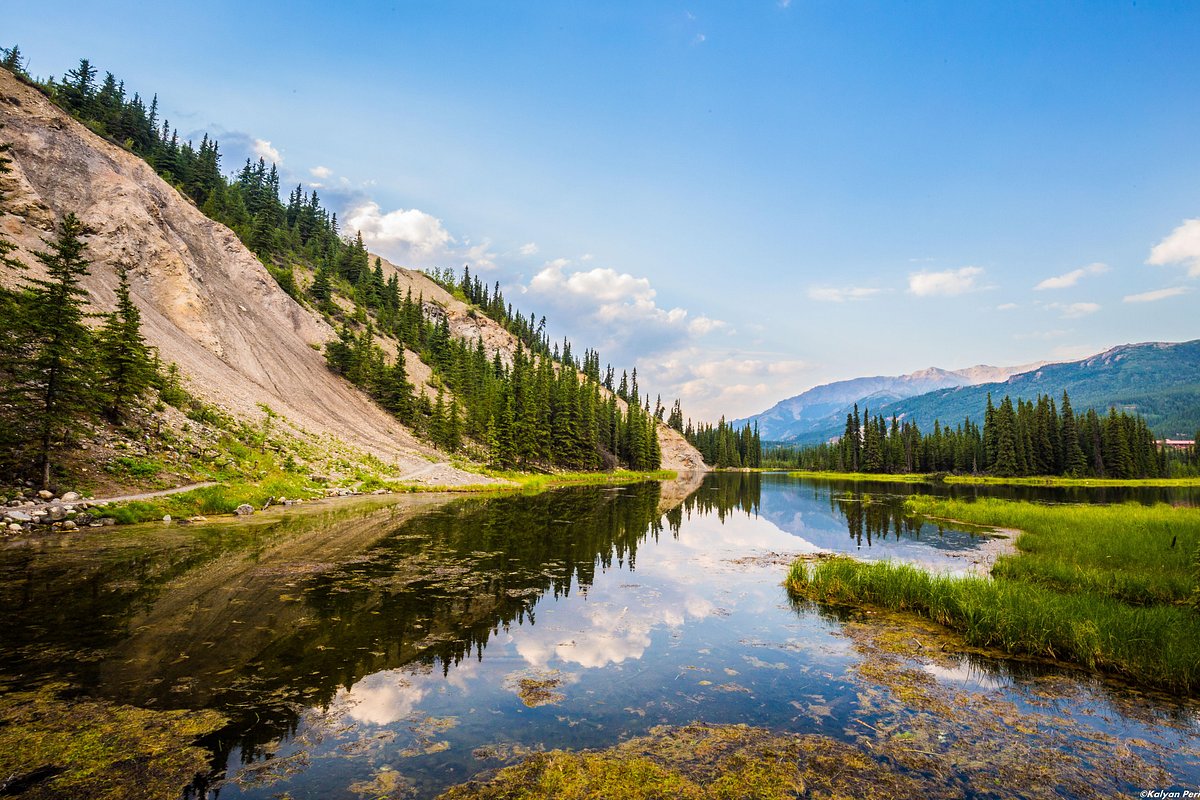
Talkeetna Lakes Park – Talkeetna
The Talkeetna Lakes Park is a popular kayaking destination because of its natural beauty and opportunities for outdoor recreation. The park is home to three pristine alpine lakes, which offer great kayaking opportunities. The four lakes, named X, Y, Z, and Tigger, are fed by glacial runoff, making the waters clean and clear. Christensen Lake is also very nearby and is a great spot to look for moose. Click for a map of the area. The scenery is simply stunning, and visitors can enjoy various activities in the park besides kayaking.
Talkeetna Lakes Park is a great choice for kayaking because of its different waterways and portage paths. The lakes are medium size and offer plenty of space to explore, and there are even kayak rentals at the parking area if you didn’t bring your own. There are also several landings with benches dotting the lakes’ shores, which make for great picnic spots. Talkeetna Lakes Park is an ideal destination for kayakers looking to EASILY explore the beautiful scenery and get away from it all.
Tip: we stayed at the Talkeetna Wilderness Lodge and loved it! Also, there’s access to Montana Creek there if you want to try your hand at some Alaskan fly fishing.
Where to launch:
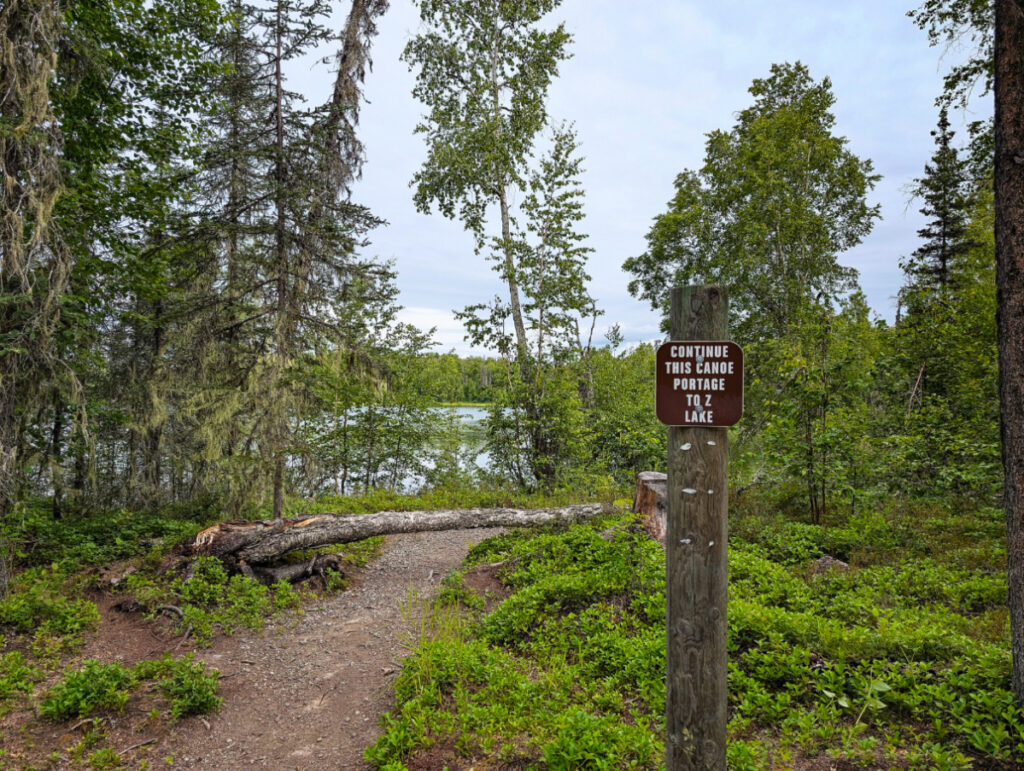
Byers Lake – Trapper Creek
Byers Lake is a quiet area ideal for families. It is located in the shadows of Kesugi Ridge and sits 28 miles north of Talkeetna within Denali State Park. A paddle on the lake provides some of the best views of Denali, formerly Mt McKinley, which will be awesome because THE WEATHER WILL BE GREAT FOR YOU (fingers crossed). For those wanting a stroll around the lake, it’s a 4.8-mile loop.
And if you’re planning kayaking on Byers Lake specifically for the view of Denali, keep in mind that the mountain is visible about 50% of the time. It’s said that only 30% of visitors get to see the mountain, but in reality it’s visible more often than that, especially if you give yourself multiple opportunities to be at a viewpoint.
Denali State Park is famous for its size and location. The park is located in the Denali Borough and is the largest state park in Alaska, at over 325,000 million acres. The park is home to many types of wildlife, including grizzly bears, Dall sheep, and black bears. The park also offers many opportunities for outdoor recreation, including kayaking and rafting. Denali Southside River Guides is a go-to outfitter in the area.
Denali State Park’s land area is as big as half of Rhode Island. This provides its visitors with various recreational activities ranging from camping to wilderness exploration. Its landscape varies from quiet lowland rivers to dominating ridges and alpine tundra.
Where to launch:
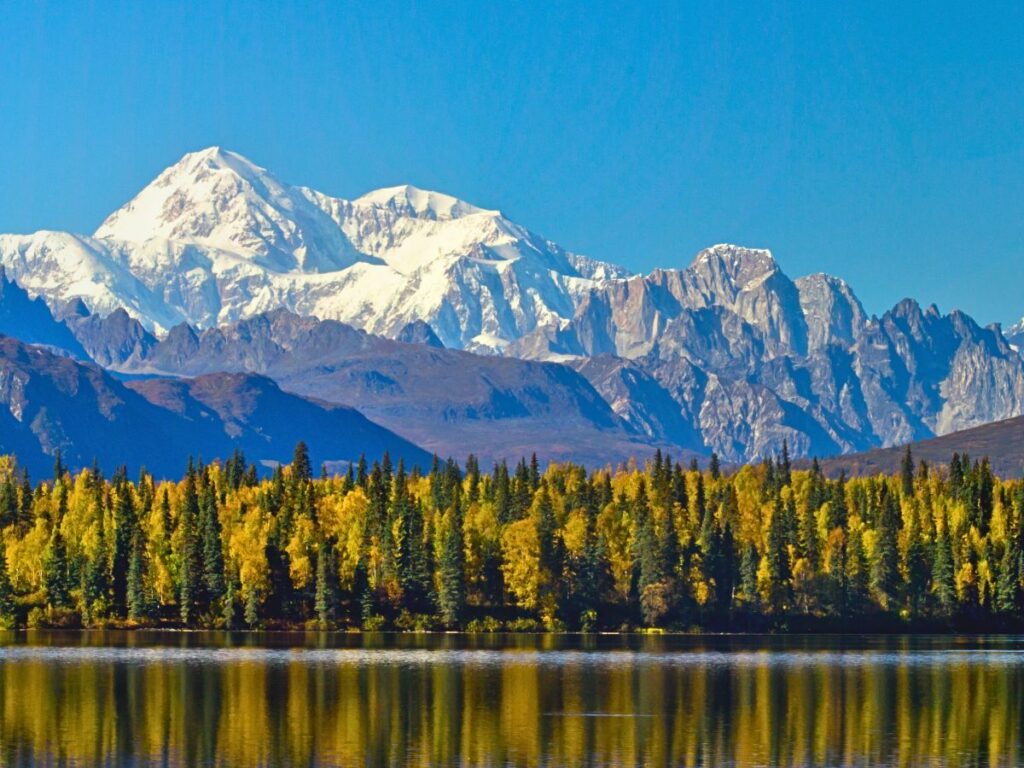
Tazlina Lake via Little Nelchina – near Glenallen
The Little Nelchina is a narrow, shallow stream that empties out into Tazlina Lake. It is approximately 27 miles long and has class II-III whitewater rapids. The narrow passage means you may have to portage some areas, but for much of the river it’s not bad if you’re an experience river kayaker. Once you’ve gotten to the Lake, it’s beautiful with icy blue water, and some areas being wonderfully clear.
Where to launch:
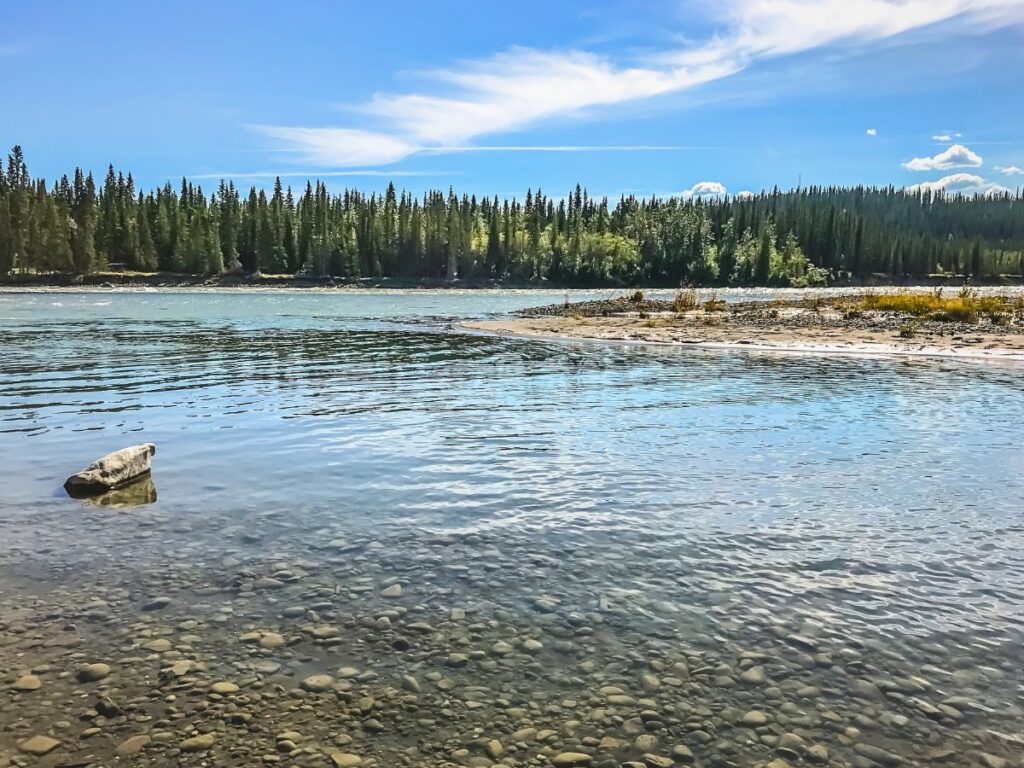
River Kayaking in between Anchorage and Fairbanks
Alaskan waterways can be challenging. Aside from the cold waters, melting glaciers, log jams, and wind conditions can prove challenging even for the most experienced paddlers. Below are some of our recommendations for seasoned paddlers. You’ll see that these recommendations are NOT all off the Parks Highway, which is the main road between Anchorage and Fairbanks. Some of these kayaking spots are north of Palmer or off the Denali Highway, so pick and choose kayaking options that are along your preferred route through Alaska.
Tazlina River – near Glenallen
The Tazlina River is a 30-mile river that empties out into Tazlina Lake. It is fed by the Tazlina Glacier in the Chugach Mountains, is home to various salmon, and is famous for fishing and boating. Paddling here should only be done by experienced paddlers as there can be logjams or portaging when waters drop. It’s quite the feat to undertake, but if you’re experienced, passionate, SAFETY CONSCIOUS and have the right gear…
Remember when you’re paddling wild rivers in Alaska: they are so very cold and unpredictable. The Tazlina River has some great stretches that are easily navigable, but depending on snow melt and weather, it can be raging. Check out this great detail of passages for the Tazlina and Nelchina Rivers.
Where to launch:
- Tazlina Boat Launch near the Chitina River
- From Tazlina Lake via the Little Nelchina
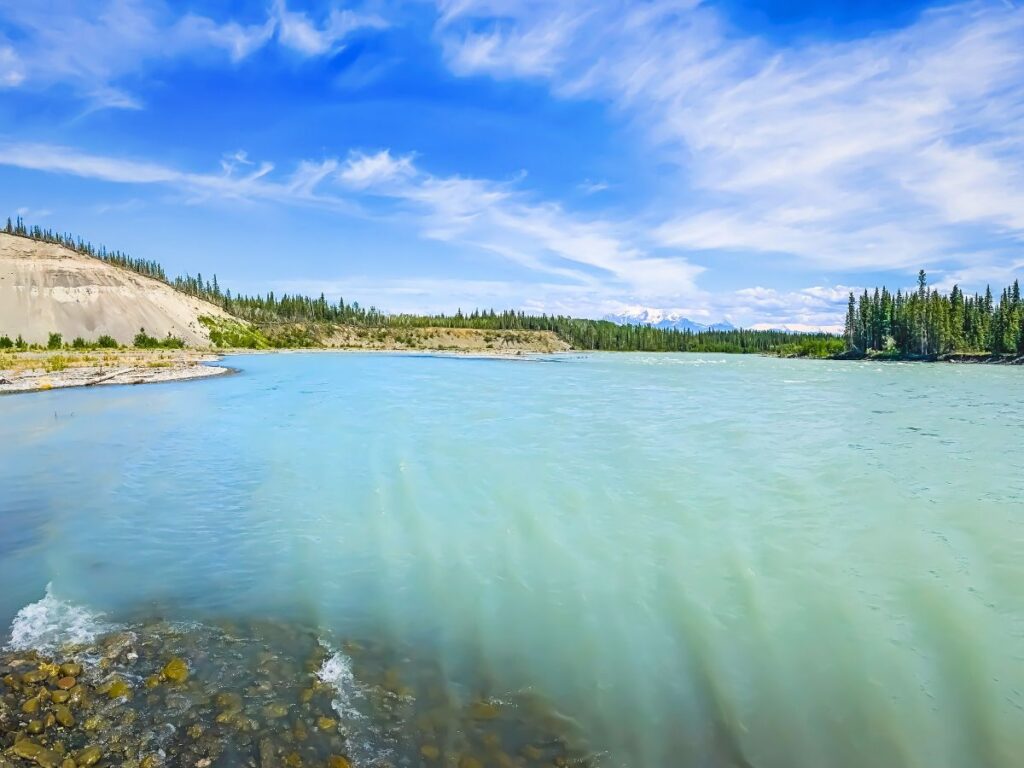
Little Susitna River – Palmer
The Little Susitna River is a small river that has a class IV+ section with 7 miles of intense rapids. For those seeking calmer waters, head north past the George Parks Highway. The section near Palmer is intense and NOT for novice river paddlers. It actually continues on for a very long ways until it goes through Houston (north of Wasilla) and meander down to empty into the Cook Inlet across the water from Anchorage.
The best part for kayaking on the Little Susitna River is the area west of Houston and Wasilla. There are quite a few launch sites, but for a more simple kayaking experience, put in at the Little Susitna Public Use launch and then paddle upstream and back. It’s easy to let the river take you downstream, but do you really want to end up hours later in Cook Inlet?
Where to launch:
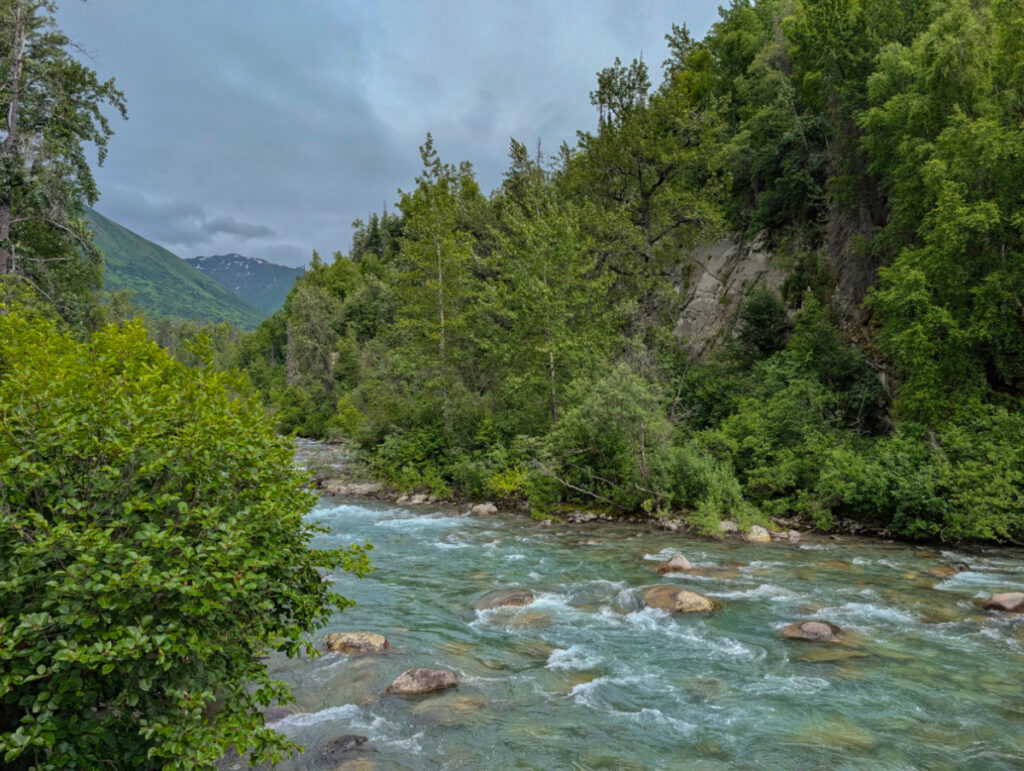
Susitna River – Talkeetna
The Susitna River is the 15th largest river spanning 313 miles through southcentral Alaska. Flowing out of the Talkeetna Mountains, it is home to the challenging Devil’s Canyon, class IV, and V+ rapids. The parts of the Susitna River that are closer to Talkeetna are better for kayaking, but keep in mind that this river FLOWS FAST. The volume of water flowing through the Susitna River, particularly in late spring/early summer is wild! Unless you’re a very strong and very experienced paddler, the streams and smaller rivers are a better bet. Know your skill level before tackling something like kayaking the Susitna River in June.
Where to launch:
- Susitna Landing Boat & Launch
- Railroad Exhibit access
- Willow Creek Campground – fun little paddle out of the launch
- Deshka Landing
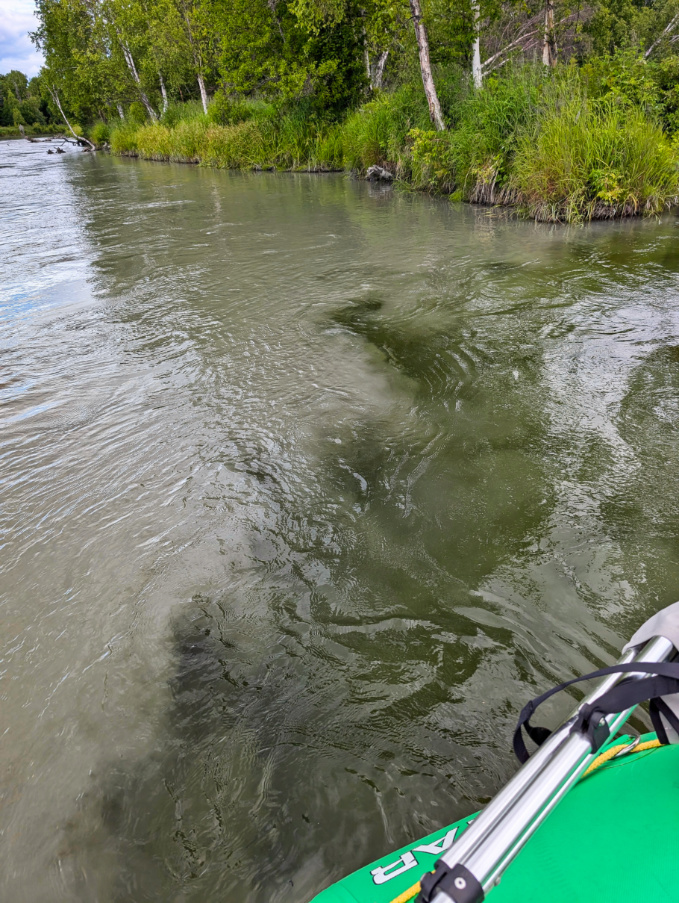
Chulitna River – Talkeetna
The Chulitna River is popular for multi-day trips with 75 miles of waterways. Like other rivers in the area, it is home to logjams meaning you’ll likely be portaging your kayak. For those wanting to catch their next meal, it is home to a healthy population of salmon. One of the ways to paddle on the Chulitna is to put in at the Parks Highway Cross and kayak downstream to the Talkeetna Riverfront Park. You’ll get some of the beautiful turquoise of the Chulitna River and then cross the confluence with the Susitna’s chocolaty water. A challenging paddle, but fun!
Where to launch:
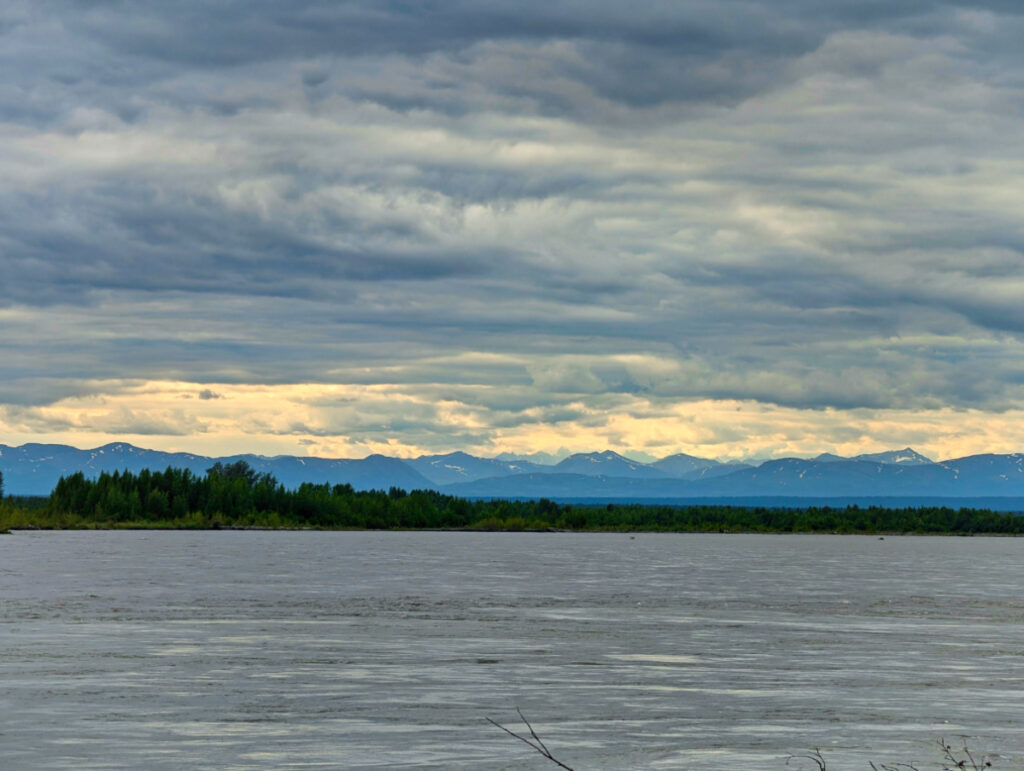
Chena River State Recreation Area – Fairbanks
Chena River State Recreation Area is nearly 400 square miles of alpine tundra, forests, rivers, and creeks. Those wanting to paddle can do so on Chena River, an easy class I-II river that’s also popular with anglers. While you’re in the area, check out the Chena Hot Springs. This is just past Fairbanks, so not specifically between Fairbanks and Anchorage, but the Chena River is so great for kayaking and it flows southwest towards more great kayaking spots.
Alaska’s Department of Natural Resources has detailed information for those planning a trip to Chena River State Recreation Area.
Where to launch:
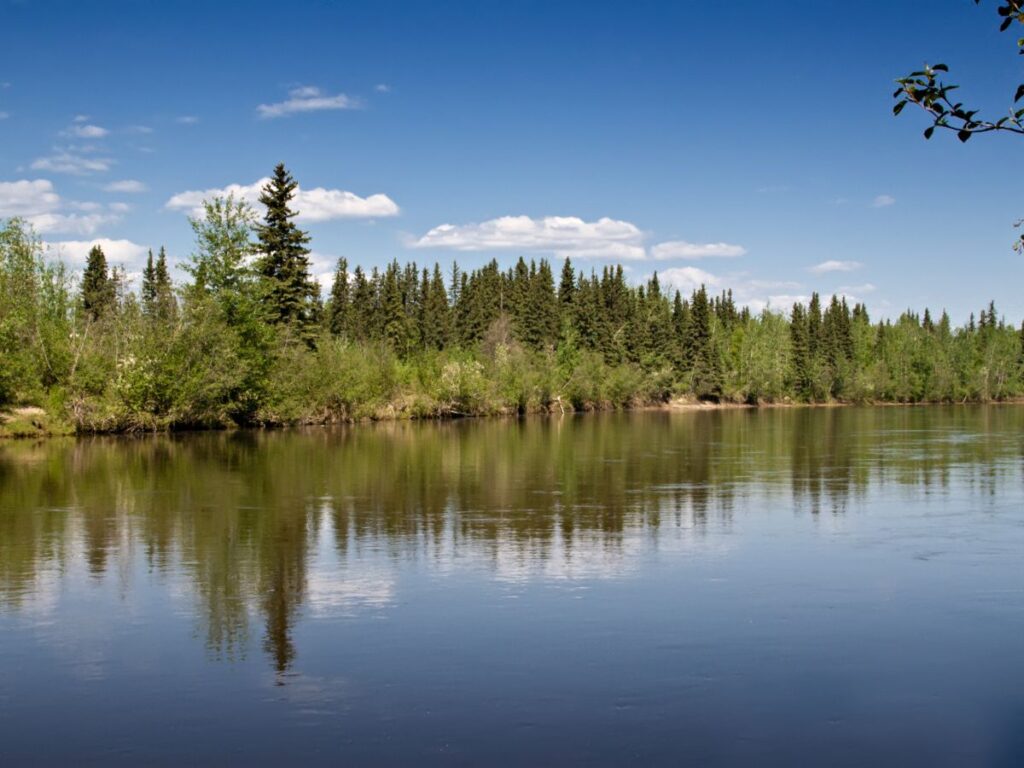
Tanana Lakes Recreation Area – Fairbanks
The Tanana Lakes Recreation Area is a great spot in Fairbanks where people can go to have fun both kayaking on the Tanana River and in the small lakes on the south side of the city. There are many things to do in summer, including fishing, swimming, and paddling. It is famous around Fairbanks for its wildlife, especially when summer birds fly through. Frequent animal sightings include eagles, moose, and bears.
If you launch your kayak from Tanana Lakes Boat Ramp, you can easily paddle with the flow of the river to where it meets the Chena River. An experienced kayaker with some good endurance and paddle back upstream when the flow isn’t too crazy.
Where to launch:
Recommended Kayaking Tours in Fairbanks and Anchorage
Chena River Canoe Adventure from Fairbanks – This tour is perfect for you if you’re looking at a gentle paddle along the Chena River. With abundant wildlife, you may be able to spot bald eagles, moose, elk, and foxes. Professional guides will help first-timers get accustomed to paddling.
Fairbanks Gear Rentals: Alaska Outdoor Gear Canoe Alaska
Glacier Blue Kayak & Grandview Tour – Anchorage – If you’re coming from Anchorage and are tight on your travel schedule, this Glacier Blue Kayak and Grandview Tour is ideal for you. Paddling Spencer Glacier Lake takes you past icebergs, waterfalls, and glaciers. The ride itself takes you through the most scenic parts of the Alaska Railroad and then you get to kayak in one of the coolest places!
Knik River Kayaking Tour – Just north of Anchorage is the Knik River, and the Reflection Lakes. For this all day tour you start on Jim Lake, paddle Jim Creek and get to explore the headwaters of the Knik River, including a view of the Knik Glacier. Pretty neat and not far from Anchorage!
Anchorage Gear Rentals: Alaska Outdoor Gear (quick rental link here) AK Paddlesports
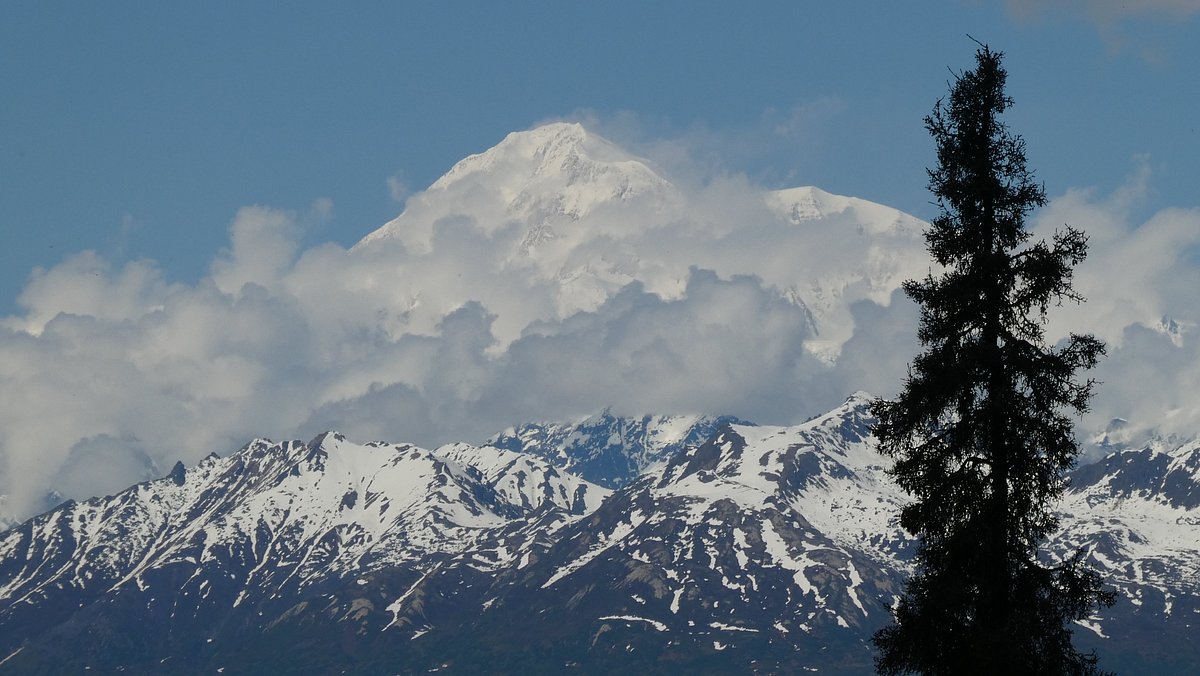
Need to Know for Alaska
Alaska is the largest state in the United States. It is known for its vast wilderness, including forests, mountains, and glaciers. Living in Alaska was one of my favorite times in my life. It’s amazing. The people of Alaska are friendly and welcoming, and there is always something to do or see in the state. Visitors to Alaska can enjoy kayaking, hiking, fishing, camping, and much more.
Wildlife in AK is for real! Even if you’re not expecting to see it, it’s around and you need to always move with wildlife safety in mind. Many different animals call Alaska home, including bears, moose, porcupines and caribou. Alaska is the perfect destination if you are looking for a place to get away from it all and enjoy the great outdoors.

When to Visit Alaska for Kayaking
I’m not into being cold, so I always say that summer is the best time for kayaking in Alaska. There’s daylight that never ends, and the weather is typically pretty good. And there’s always something going on. Live music is EVERYWHERE and markets and fairs just add to the fun of visiting Alaska in the summer.
Some popular annual events in Anchorage are the Fourth of July fireworks show, the Fur Rendezvous winter festival, and the Alaska Folk Festival in spring. Some popular annual events in Fairbanks are the Midnight Sun Baseball Game, the Gold Rush Days parade and celebration, and the World Ice Art Championships in February. Fairbanks even has an ice museum. Good times.
Weather in Alaska
Visitors should expect to experience all four seasons, with temperatures ranging from sub-zero temperatures in winter to well over 100 degrees Fahrenheit in summer. The best time to visit south central Alaska between Fairbanks and Anchorage is during the spring or fall, when temperatures are milder and before the summer crowds arrive. Water sports are great in-between spring and fall, and most people visiting the area between Anchorage and Fairbanks aren’t there to kayak, so the rivers stay fairly empty.
If you’re in the AK, you will likely find yourself in Denali National Park at some point, which has a wide range of weather conditions given the dramatic topography. It spans over 6 million acres, making it one of the largest national parks in the United States. The park is home to some of the most stunning landscapes in North America, including Mount McKinley, the highest peak in North America. There aren’t really kayaking spots IN Denali National Park, but there is awesome rafting on the Nenana River just outside the park. Summer rafting at Denali is awesome!

If you need additional recommendations for kayaking between Anchorage and Fairbanks, please leave a comment or send us a note. We’re always happy to share more or connect you with local friends and guides!

